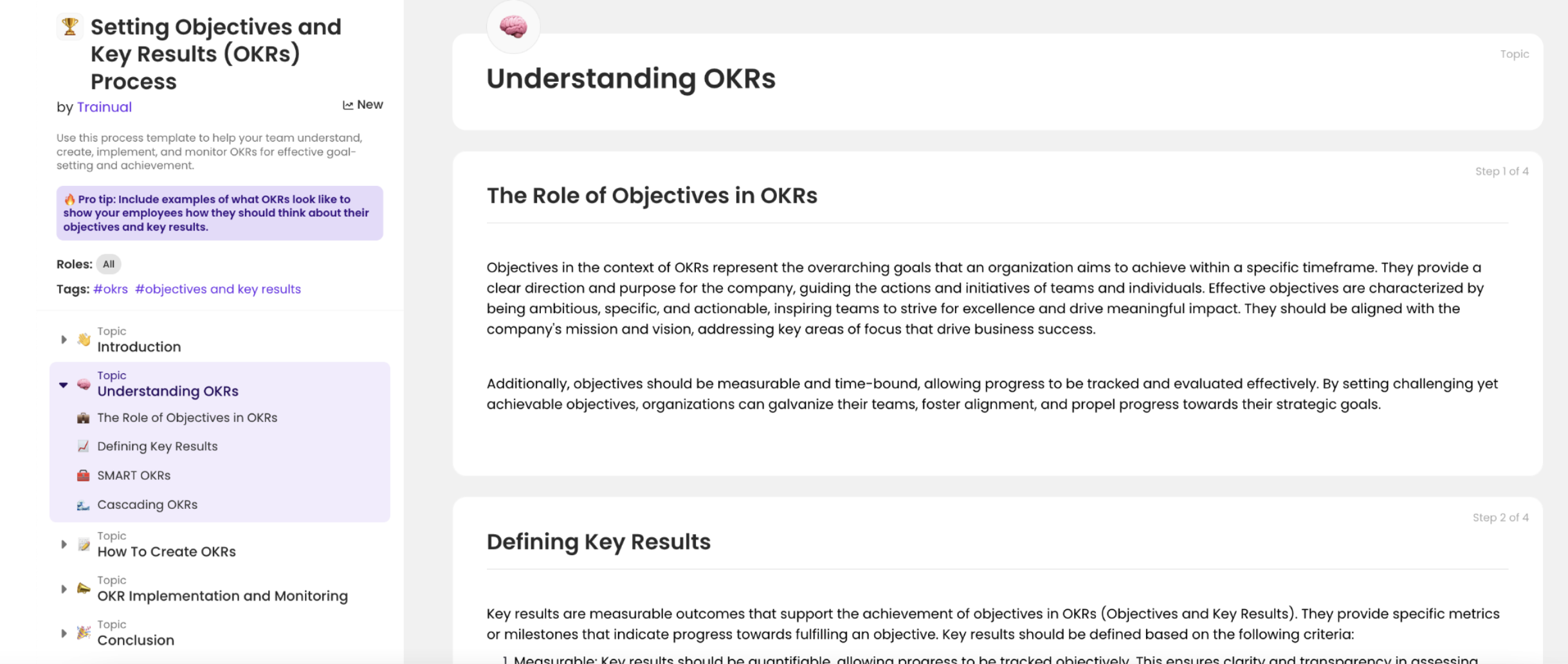Spending money to grow your business? Read this first.
April 3, 2024

The glow-up is real — and we want to show you how we did it! Join us for a one-day, immersive workshop that provides you with the full blueprint for building a scalable company. Get a look behind the curtain into the operational systems and company culture that drives our success. 🔥 Get more info here!
Hot off the SMB press this week:
- Teach your team about setting OKR goals with this process template.
- The best ways to support and uplift your introverted employees.
- How to set up managerial support for training accountability and monitoring.
- And the four things you need to consider for your growth funding plan.
STARTER PACK
Template of the week: Setting Objectives and Key Results (OKRs) Process

We’ve been seeing a lot of POVs on social media recently — but where’s the POV for when you want your team to start setting business goals that create clarity and alignment around your priorities?
The solution: Objectives and key results (AKA, OKRs). This goal-setting framework helps you define objectives (which represent the desired outcomes or goals to be achieved) with key results (the specific, measurable milestones that indicate progress toward those objectives).
And how do you train your team on how to set OKRs that are comprehensive, monitorable, and actually help your company?
👉 Enter the Setting Objectives and Key Results (OKRs) Process template. With a step-by-step guide and fully-fledged examples, your team will have no questions about how to successfully create OKRs. All it needs is your personal touch, and it’s ready to train your team!
Want more templates to help you build your business playbook? Check out our entire template archive of free, multimedia-enhanced, and customizable policy, process, and role starters. New to Trainual? Get a demo.
BEHIND THE SCENES
Over half of your workers are introverts. Here’s how to support them.
Because of their personality, introverts (AKA, 56.8% of your team) can be overstimulated in open office environments, struggle to socialize with coworkers or clients, hesitate to speak up in meetings, become anxious about presentations, and find collaboration challenging. And that’s not to say introverts are bad workers — they just tend to feel more stress over social circumstances in the workplace.

Here are five ways to encourage your introverted employees:
1. Encourage them to speak up early in meetings.
Don’t let your introverts fade into the background during meetings. Instead, challenge them to be the second or third person to contribute in the meeting. This helps that dreaded “the longer you wait, the harder it is to interject” phenomenon.
2. Take the pressure off.
Remind your introverts that they don’t have to be the center of attention to make their presence felt. There are other options like asking questions, building on a colleague’s point, and reflecting.
3. Help them ditch the self-deprecation.
Encourage your introverts to forgo the disqualifiers like “This may be a terrible idea, but…” and try more assertive language like, “Another approach could be…”
4. Leverage asynchronous methods of communication.
Async communication lets your introverts take their time to deliberate without the pressure of responding on the spot. So, letting your introverts reflect on something in person and follow up async will help them unveil their best work.
5. Recognize their achievements.
Introverts tend to lean towards modesty, but it’s important for them to claim their successes. Encourage them to start by expressing gratitude — saying things like, “I’m thankful for the opportunity to contribute to this project.”
TRAINUAL TIPS & TRICKS
Live today: Group manager capabilities
If you need help doing things like monitoring employee training progress, assigning content, and holding people accountable for their responsibilities — but you don’t want more people to have Admin capabilities in your account — then you’ll want to make some of your users group managers.

You can make any user a group manager — whether they’re a general user, contributor, author, or admin. And when you do, you give them the ability to:
- Edit the group description.
- Add responsibilities to the group.
- Share content with everyone in the group.
- Add members to the group.
- View training progress reports of group members.
- View (and edit) group member profiles.
- Invite new users to Trainual.
Group managers only have these capabilities for the groups that they’re a part of, unlike admins who have these capabilities across the account.
To make someone a group manager, head to the groups page, go to the group you’d like them to manage, and click “Choose a manager.” From there, you can add as many group managers as you’d like.
📽️ Learn more tips and tricks for the group manager feature.
MAKIN’ IT RAIN (SENSIBLY)
The four T’s for spending your revenue on growth
There comes a time in every growing business’ life when they need to start investing money in themselves to really start scaling.

But before you start flashing the business credit cards, this isn’t blanket permission to just spend without thinking.
We’re not here to tell you how to spend your money — you’re the boss! — but we can offer some advice about preparation. When that investor money comes through or your business is doing well enough revenue-wise that you feel comfortable spending to grow, you need a funding plan based on the four T’s:
- Time: How long will this cash last? Think about how much you have available, add your expected monthly revenue, and subtract the burn rate. Are you making a lot of self-investment upfront, or spreading it out over many months?
- Talent: How much new experience can you bring into the team to help you push your boundaries? You may have gaps that need to be filled immediately. Then, consider the resources that can accelerate your output.
- Tech: Which platforms can you use to automate and scale? Priorities like customer relationship management and employee training can be streamlined with the right platforms (*cough* Trainual *cough*), saving you money and time in the long run.
- Traction: How much market share can this money help you win? Be realistic — that way, you can spend your money going after achievable goals.




